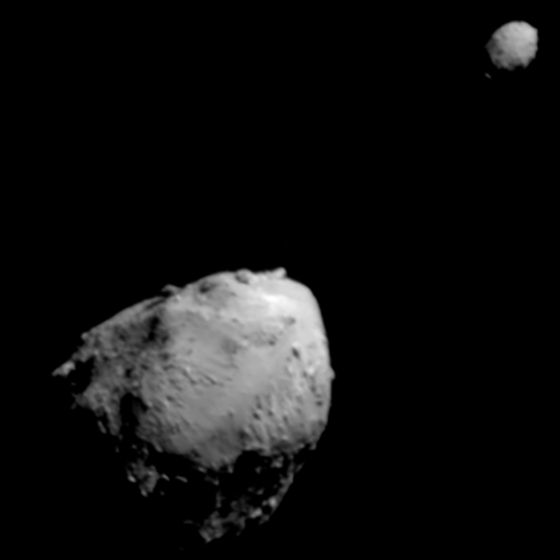Archivo: Didymos-Dimorphos true orientation
Descripción: Asteroid Didymos (bigger/nearer one) and its moonlet, Dimorphos, about 2.5 minutes before the impact of NASA’s DART spacecraft. The image was taken by the on board DRACO imager from a distance of 570 miles (920 kilometers). This image was the last to contain a complete view of both asteroids. Didymos is roughly 2,500 feet (780 meters) in diameter; Dimorphos is about 525 feet (160 meters) in length. The original DART/DRACO images shown in NASA's live stream were mirror-flipped from reality; this version corrects this issue. From DART's perspective, the Sun illumination direction comes from the right, shining down on Didymos and Dimorphos with an extra portion of their southern hemispheres exposed. (see Figure 2 of Rivkin et al. (2021) for a diagram of the Didymos system with the illumination, orbit, DART impact directions)
Ecliptic north points toward the top left corner of the image. Because the Didymos system rotates retrograde with respect to its heliocentric orbit, the rotational north pole of Didymos and Dimorphos points toward the bottom right corner of the image, opposite to the ecliptic north pole. When this image was taken, Dimorphos's orbital velocity was headed directly toward DART, which itself is moving directly toward Dimorphos for a head-on impact.
Términos de Uso: Dominio Público
Usos del archivo
La siguiente página enlaza a este archivo:


